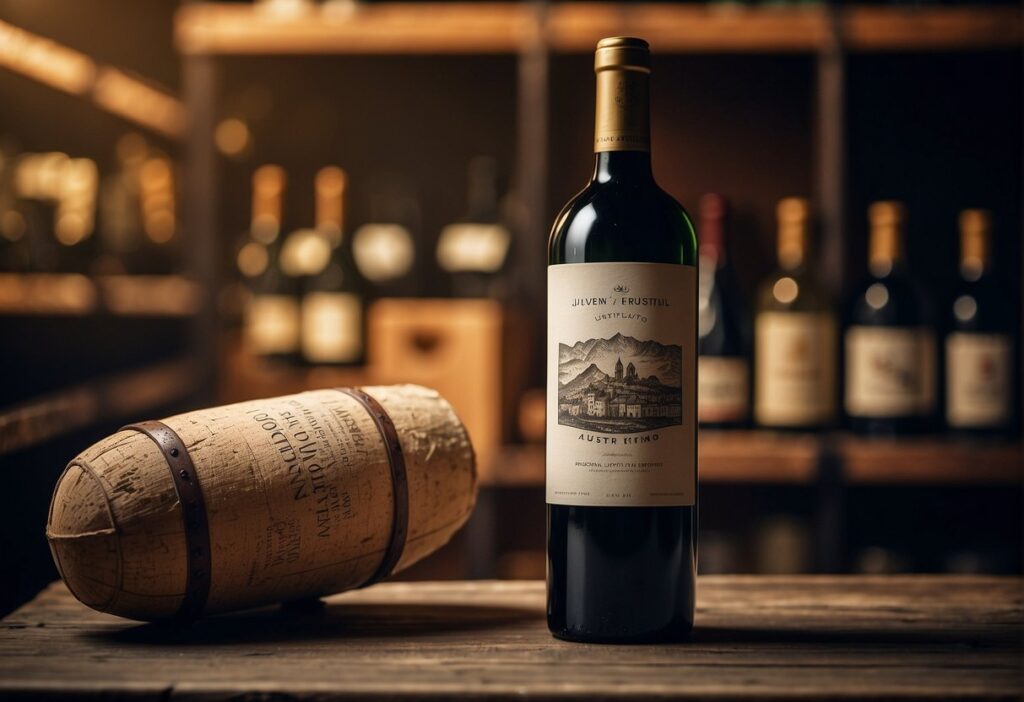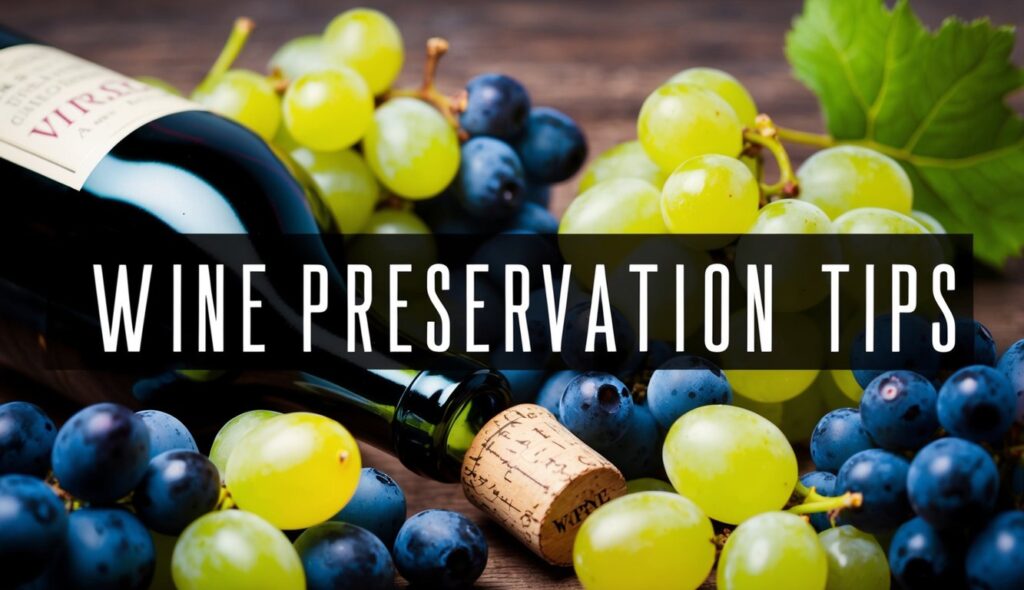Proper wine storage is essential for maintaining the quality of your wine collection throughout the changing seasons. Variables like temperature, light, and humidity can significantly impact your wine’s taste and longevity.
By understanding how to adjust your storage techniques according to the season, you ensure that each bottle remains at its best.

During warmer months, consider using a wine refrigerator designed for stable temperatures, as standard refrigerators are often too cold.
When winter arrives, maintaining an even temperature is crucial to avoid temperature fluctuations that can negatively affect the wine.
Storing wine at a steady temperature and protecting it from UV light are key practices for any serious collector.
Ensure your storage area maintains adequate humidity as well; if the corks dry out, air can enter the bottle and spoil your wine. This attention to detail in wine storage can help you preserve the quality of your wonderful collection.
Understanding the Basics of Wine Storage
Proper wine storage ensures that each bottle maintains its flavor and aroma. Key aspects include maintaining a stable temperature, ensuring proper humidity control, and protecting your collection from light and UV rays.
The Importance of Stable Temperature
A stable temperature is crucial for preserving wine’s quality. Fluctuations can ruin the taste and bouquet of the wine.
The ideal storage temperature is around 55°F (13°C). Extreme cold or warmth can cause the wine to age too quickly or too slowly, affecting its flavor.
Avoid storing wine in locations where temperature varies, such as kitchens or attics. A dedicated wine cellar or a temperature-controlled wine fridge can help. These environments provide consistent conditions, ideal for long-term storage.
Humidity Control Essentials
Balancing humidity is vital for maintaining wine integrity. A proper humidity level lies between 50%-75%.
If humidity is too low, corks can dry out, letting air into bottles, which can spoil wine. High humidity might lead to mold growth on corks and labels.
Consider using a hygrometer to monitor humidity in your storage area. A room with moderate humidity, such as a cellar, is recommended. This protects your collection by keeping the corks moist without encouraging excessive mold.
Protecting Wine from Light and UV Rays
Wine is sensitive to light, especially UV rays, which can degrade its quality over time. Light exposure can alter the wine’s chemical structure, impacting taste and smell.
A dark space is essential to shield bottles from harmful light.
Store wine in a place away from direct sunlight. Use tinted glass doors on cabinets to block UV exposure if needed. These simple measures help maintain the wine’s rich flavors and aromas throughout its aging process.
Seasonal Adjustments for Wine Storage

Adjusting how you store wine according to the season is crucial for preserving its quality and taste. Effective wine storage involves managing temperature and humidity levels, both of which can fluctuate due to seasonal changes.
Adapting to Warmer Months
During warmer months, it’s vital to maintain a stable temperature between 45-65°F to prevent the wine from expanding and contracting. Using a wine refrigerator can help you achieve this consistent temperature.
High temperatures can cause leaks and oxidation. To prevent this, store your wine in a basement or another cool, dark place.
A humidity level of 50-70% is optimal. Store bottles horizontally to keep corks moist, preventing air from entering the bottle.
Regularly check the wine refrigerator to ensure all settings remain within the recommended range.
Winter Storage Considerations
Winter storage considerations focus on keeping wine at a stable temperature while also preventing corks from becoming too dry.
High humidity levels, ideally around 70%, can help prevent corks from drying out, reducing the risk of air entering the bottle and spoiling the wine.
Using a wine refrigerator helps maintain these conditions.
In colder months, avoid areas near heat sources like radiators. For those without a wine fridge, a cool cupboard or interior closet can provide a stable environment.
Regularly monitor the conditions with a thermometer and a hygrometer to maintain the right balance for your collection.
Wine Refrigeration and Coolers
Using a dedicated wine refrigerator or cooler is essential for maintaining the quality of your wine collection. These appliances ensure proper temperature and humidity levels, protecting your wine from spoilage and premature aging.
Choosing the Right Wine Fridge
When selecting a wine fridge, consider the capacity based on your collection size. Choose a model that can hold slightly more than your current collection to account for future growth.
Temperature zones are also crucial; dual-zone fridges allow you to store different types of wine at their ideal temperatures.
Look for energy-efficient models with reliable temperature and humidity control. A good UV-resistant door is important to shield wine from harmful light.
Setting Up Your Wine Cooler
Once you’ve selected a cooler, placement is key. Ensure it’s in a location away from direct sunlight and heat sources, like ovens or radiators, to maintain a consistent environment.
Keep the cooler on a flat surface for optimal performance.
Use the provided settings to dial in the ideal temperature, usually between 45°F and 65°F, and adjust the humidity settings as needed to prevent corks from drying out.
Maintaining Your Wine Refrigerator
Proper maintenance ensures your wine fridge runs smoothly and efficiently.
Regularly clean the interior with a mild detergent and water to prevent mold and odors.
Check the seals on the doors to ensure they are tight, keeping the cold air in. Also, inspect and clean the condenser coils to maintain energy efficiency.
Set reminders to inspect your appliance every few months to keep it in top condition.
Long-Term Wine Storage Solutions

For successful long-term wine storage, maintain a stable environment with specific temperature and humidity settings. Choose between professional wine storage facilities and developing a home cellar. Each option has distinct benefits to ensure wine quality over time.
Investing in Professional Wine Storage
Opting for professional wine storage offers consistent conditions crucial for preserving your collection.
These facilities usually maintain a temperature range of 55°F to 59°F, which is ideal for long-term aging. They also control humidity, keeping it between 60% and 80%. This prevents corks from drying out, which can lead to spoilage through oxidation.
Security is a key aspect of professional facilities. They often have advanced systems to protect your investment from theft and damage.
Additionally, wines stored here receive protection from light and vibrations, both of which can negatively impact quality.
Using professional storage can help preserve the wine’s integrity, allowing it to reach its ideal drinking window.
Home Cellar Strategies for Aging Wine
Creating a wine cellar at home requires careful planning.
The ideal temperature for wine aging is similar to professional facilities: around 55°F. You can achieve this with a dedicated wine cooler or a climate-controlled room.
Proper humidity is equally important, so consider using a humidifier to maintain levels between 60% and 80%.
Wine racks play a significant role in home storage. They should allow bottles to lie horizontally, which keeps corks moist and air-tight.
Additionally, protect your wines from light exposure by using dark spaces or UV-protected glass.
For best results, minimize vibrations by choosing a stable location, like a basement or a cellar. By managing these factors, you help your wines age gracefully, preserving their flavors and aromas for many years.
Management and Organization of Your Wine Collection

Proper management and organization of your wine collection ensure that your wines are stored efficiently and maintain their quality over time. Effective inventory techniques and strategic bottle positioning play crucial roles.
Inventory Management Techniques
Efficient inventory management is essential to tracking and organizing your wine collection.
Start by categorizing wines based on their type, origin, and vintage.
Use digital tools or apps designed for wine inventory management to keep precise records. These tools can provide alerts for optimal tasting windows, reducing the chance of missing out on the best time for consumption.
Consider labeling each bottle clearly, noting essential details like purchase date and optimum drinking period. This practice helps in planning immediate consumption and future tastings.
Grouping wines with similar qualities together also aids in maintaining order and easy access.
Optimizing Bottle Position and Rotation
Organizing the position and rotation of wine bottles is vital for preserving wine quality. Always store wine horizontally to keep corks moist and prevent oxidation.
Position bottles in a way that allows for easy visibility and access. This will save you time and hassle when selecting a wine.
To keep your collection fresh, rotate wines regularly. Focus on consuming older or more delicate bottles first.
Pay attention to the labels on the bottles to help in this process. Thoughtful rotation prevents wines from spoiling and ensures they are ready for savoring when the right occasion comes.

